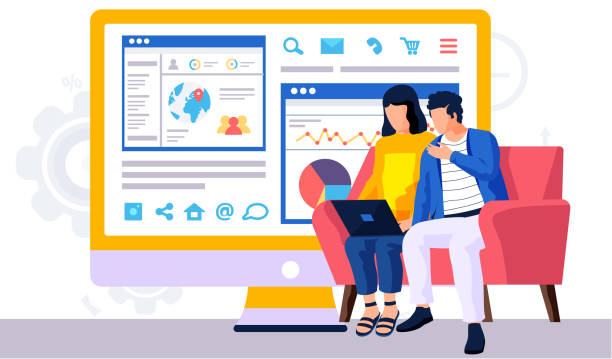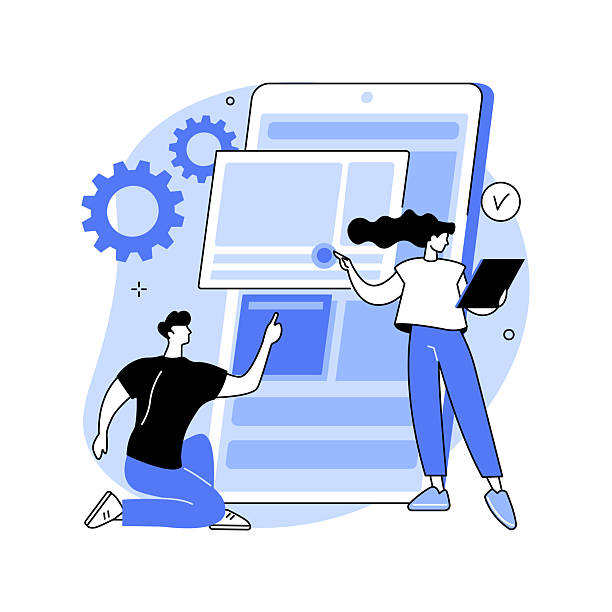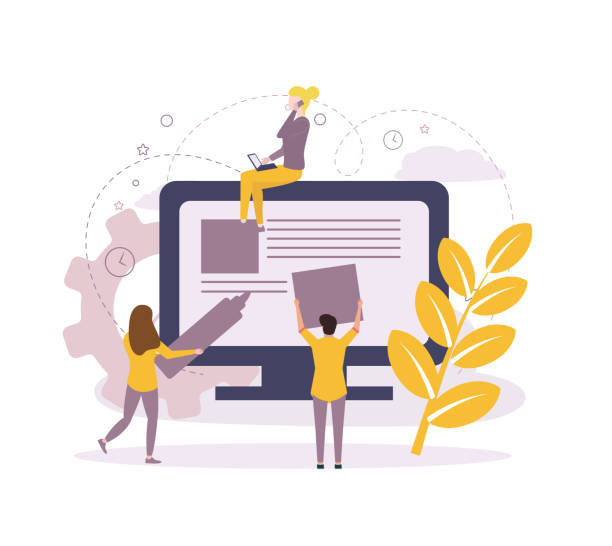Introduction to the World of Custom Website Design
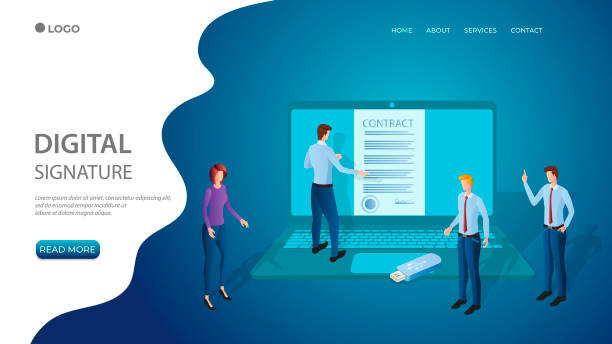
In today’s fast-paced #digital world, having a strong and distinct online presence is not just an advantage for any business, but an undeniable necessity.
While ready-made templates and generic content management systems (CMS) like WordPress can offer a quick and low-cost start for small businesses, nothing can replace custom website design for achieving specific goals, establishing a truly unique brand identity, and reaching unparalleled performance and high scalability.
#Custom_website_design means building a website from scratch, with custom coding tailored to your business’s precise needs, processes, and goals.
This approach allows you to control every aspect of your site with complete precision and flexibility; from visual design and user experience to advanced technical capabilities, data security, and integration with internal business systems.
This type of website development enables you to implement exactly what you envision, without any functional limitations or unnecessary extra features that might slow down your site.
This path is a smart investment for your long-term business growth and creates a significant distinction in today’s competitive market.
One of the main reasons for choosing custom website design is the complete #freedom_of_action in implementing features and functionalities not found in any ready-made template or plugin.
Suppose your business needs a complex system for managing orders with specific rules, a customer portal with tiered access, or an advanced data analysis tool that must communicate with your other internal software.
In such situations, ready-made templates cannot meet these needs, or implementing them requires the use of multiple add-ons and plugins, which can lead to reduced speed, increased security vulnerabilities, and maintenance complexities.
A custom site assures you that your infrastructure is designed from the outset to support these unique capabilities, allowing you to move beyond your competitors.
Furthermore, building a personalized website means full control over security and performance.
Optimized and clean code ensures faster page loading, which is a crucial factor in user experience and SEO ranking.
The absence of unnecessary extra code and plugins means fewer security vulnerabilities, which is vital for protecting your sensitive customer and business data.
This type of investment not only helps you create a powerful digital platform but also provides the necessary flexibility for future development and updates, ensuring that your site evolves with your business growth and always stays ahead.
Did you know that poor online store design can drive away up to 70% of your potential customers? Rasaweb transforms your sales with professional and user-friendly e-commerce website designs.
✅ Significant increase in sales and revenue
✅ Full optimization for search engines and mobile
⚡ [Get free consultation from Rasaweb]
Why Your Business Needs Custom Website Design?
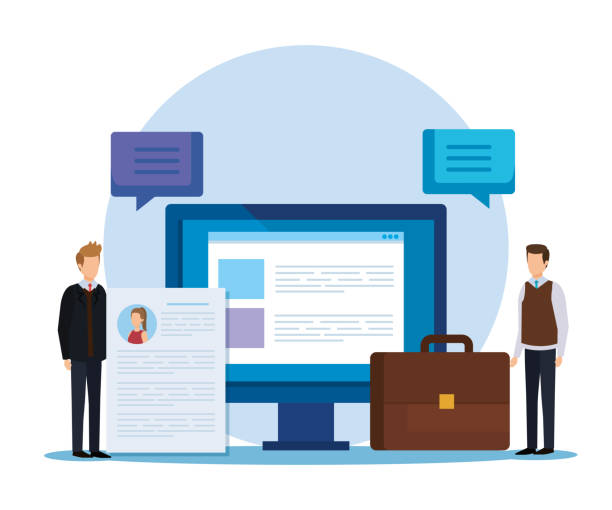
The question many entrepreneurs and business managers ask is whether they truly need custom website design when cheaper and faster options are available? The answer is that if you are looking for brand differentiation, high performance, strong security, and endless scalability, then yes, this type of design is essential for you.
A custom site allows you to build exactly what you want, without having to grapple with the limitations of ready-made platforms or generic templates.
This means a powerful #brand_identity, a perfect reflection of your company’s values and aesthetics, and an unparalleled #user_experience that attracts and retains your customers.
Ready-made platforms often come with design, functional, and integration limitations that can hinder your business’s growth and innovation in the long run.
For example, if your business requires a complex inventory management system that directly communicates with your accounting software, or a customer portal with specific reporting and customization capabilities for each user, or an online reservation system that operates with your unique algorithms and is not found in any ready-made plugin, unique website development is the best option.
This approach also leads to greater security and better search engine optimization (SEO).
Because its code is optimized and lightweight, there is no extra code that would slow down the site.
This is crucial for higher ranking in search results and attracting organic traffic.
On a custom site, you have full control over URL structure, meta tags, and other technical SEO factors that might be limited on ready-made platforms.
Ultimately, custom website development is an investment for the future that yields significant returns.
With a custom site, you not only have a powerful marketing tool but also create a flexible and expandable platform for future innovations.
This allows your business to quickly adapt to market changes and customer needs and easily add new functionalities.
This level of adaptability and control is crucial for businesses seeking sustainable growth and long-term competitiveness.
Key Stages in the Custom Website Design Process
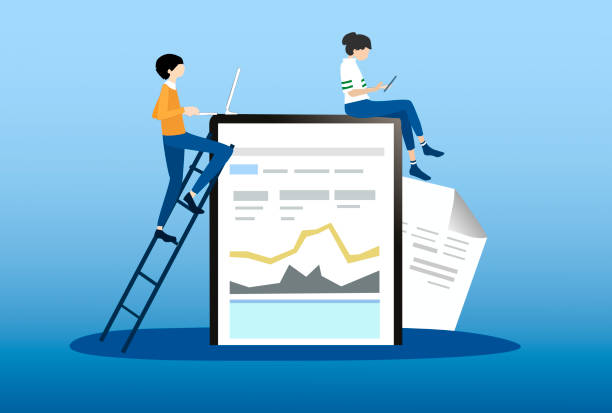
The #custom_website_design process is a comprehensive and multi-stage journey, with each step being vital for achieving a successful outcome and a high-performing website.
This process begins with research and needs discovery; in this stage, the design team thoroughly familiarizes itself with your business goals, target audience, revenue models, and precise competitor analysis.
This phase includes brainstorming sessions, questionnaires, and market analysis to gain a clear picture of what needs to be built.
Next, it’s time for planning and strategy formulation, which involves preparing a sitemap, wireframes that show the overall layout and structure of the pages, and prototypes that simulate the user flow.
This stage ensures that the site’s structure and user flow are correctly designed and meet the needs of users and the business.
Following that, the #user_interface (UI) and #user_experience (UX) design stage arrives, where the visual appearance of the site, including colors, fonts, images, and interactive elements, is designed to be both attractive and user-friendly.
UI/UX designers, based on the research from the first phase, create designs that are not only beautiful but also help users navigate the site easily and achieve their goals.
The next stage and the heart of the process is development and coding, where graphic designs are converted into executable code.
In this phase, backend and frontend developers implement the desired functionalities and set up databases using appropriate programming languages and frameworks.
This stage involves building every part of the site, from the homepage to contact forms and complex backend systems.
After development, testing and quality assurance (QA) are performed to ensure that the site operates without any technical or security flaws and with optimal performance.
This includes performance testing, compatibility testing across different browsers and devices, security testing, and usability testing.
Finally, after final approval, the site is launched and made available to the public.
But this is not the end; after launch, continuous support and maintenance are provided for updates, resolving potential issues, and adding new functionalities.
This cycle ensures that your site always performs at its peak, remains secure, and adapts to your growing business needs.
| Stage | Key Description | Main Goal |
|---|---|---|
| Research and Needs Discovery | Deep understanding of business goals, target audience, competitors, and limitations. Comprehensive data collection. |
Precise identification of needs, project vision, and initial strategy formulation |
| Planning and Structure | Creation of sitemap, wireframes, and prototypes to define user flow and information architecture. | Defining a logical structure and optimal user path before visual design |
| UI/UX Design | Visual design (including color, font, images) and user experience improvement for attractiveness and ease of use. | Creating a beautiful and user-friendly appearance that reflects brand identity |
| Development and Coding | Implementation of approved designs into code (frontend and backend), development of functionalities, and database integration. | Building an active, dynamic site with desired functionalities |
| Testing and Launch | Comprehensive tests (performance, security, compatibility), bug fixing, and final site publication on the server. | Ensuring correct functionality, security, and public access to the site |
| Support and Maintenance | Security updates, bug fixes, performance monitoring, and future developments. | Maintaining site stability, security, and up-to-dateness over time |
The Importance of User Experience (UX) in Custom Website Design
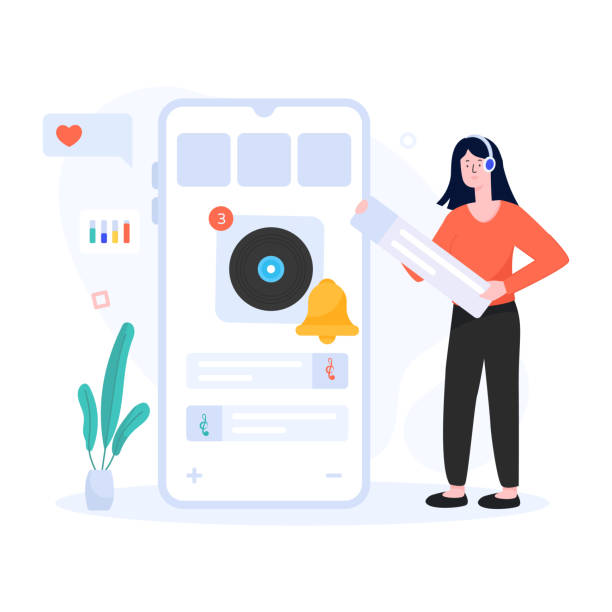
At the heart of every successful custom website design lies #user_experience (UX).
UX is not just about visual aesthetics or attractive element arrangement; it’s about ensuring that visitors can easily and effortlessly interact with your site, find the information they need, and achieve their goals.
A #custom_site with strong UX encourages users to spend more time on your site, feel more satisfied, increases their likelihood of returning, and ultimately converts them into loyal customers.
Poor UX can lead to high bounce rates, decreased conversion rates, and ultimately, a wasted significant investment in custom website design.
In the process of fully customized website design, UX professionals utilize various methodologies and tools to optimize every aspect of user interaction with the site.
This includes user research to deeply understand audience behaviors and needs, User Journey Mapping to illustrate potential user paths on the site, and wireframing and prototyping for initial testing of flows and designs before final coding.
Visual and logical navigation design, fast page loading times, Responsive Design to ensure correct display and optimal performance on various devices (mobile, tablet, desktop), and providing clear, concise, and engaging content are all fundamental principles of successful UX.
Ignoring the importance of UX can have irreparable consequences for a business; even if a site is technically flawless, if the user cannot interact with it easily, it loses its value.
For this reason, in personalized website building, UX must be considered as a main backbone.
This means focusing on the user from the very early stages of design and development to ensure that the site is not only beautiful but also efficient, usable, and beneficial.
Investing in UX means investing in customer satisfaction and ultimately, the sustainable growth of your business.
Are you dissatisfied with low sales from your e-commerce website?
Rasaweb is your solution for having a professional and high-selling e-commerce site.
✅ Significant increase in sales and revenue
✅ Easy and enjoyable shopping experience for customers
⚡ Get a free consultation from Rasaweb now!
SEO Optimization for Custom Websites
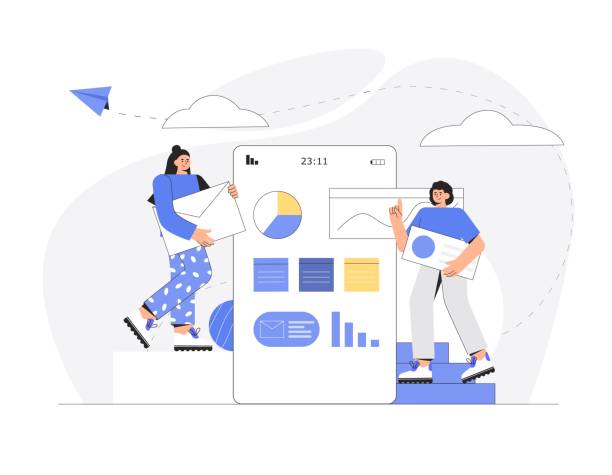
One of the biggest advantages of custom website design is its #high_potential and unparalleled #flexibility for #SEO_optimization.
While ready-made platforms and generic CMSs may have limitations in technical and structural optimization, a #custom_site allows you to adjust every aspect of the site’s code and structure for better search engine rankings.
This includes optimizing site loading speed, which is a very important ranking factor and influential in user experience, clean, logical, and SEO-friendly URL structures, correct and strategic use of Title Tags and Meta Descriptions, and implementation of Schema Markup.
Developers can remove extra and unnecessary code to make the site lighter and faster, allowing it to load in a fraction of a second, which is highly regarded by search engines.
Furthermore, the Information Architecture of a custom website design can be designed in a way that makes content crawling and indexing by search engine bots easier and more efficient.
Access to the source code allows developers to ensure that the site is fully Responsive and provides a flawless user experience on all devices, including mobile and tablet, which is also a crucial factor for ranking in Google and other search engines.
The ability to natively implement SSL certificates, which are essential for security and SEO, is also easily possible.
This level of control over the technical SEO infrastructure enables businesses to surpass their competitors who use generic platforms.
Additionally, custom website design allows you to implement your content strategy in the best possible way and produce unique, high-quality content fully relevant to your target keywords.
This capability includes creating specialized blogs, custom Landing Pages, and optimizing existing content to increase authority and organic traffic.
Investing in custom website design alongside a strong SEO strategy helps you to maximize your online visibility, drive targeted and high-quality traffic to your business, and ultimately achieve increased brand awareness and sales growth.
This powerful combination creates a sustainable competitive advantage for your business.
Technologies and Tools Used in Custom Website Design
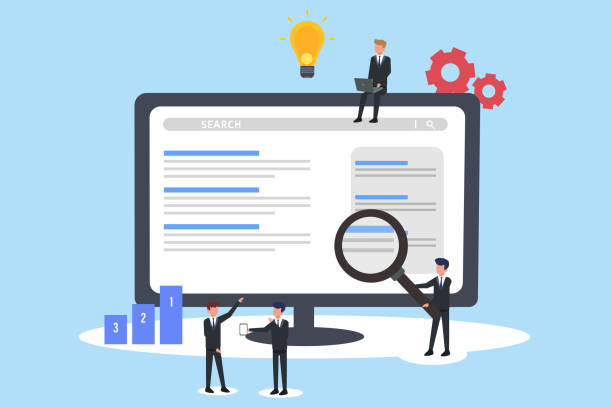
The world of #custom_website_design is full of diverse #technologies and #tools, each playing a vital role in building a powerful, scalable, and fully customized website.
The selection of appropriate technology depends on the specific project needs, desired scalability, type of required functionalities, and the development team’s expertise.
For Backend development, languages such as Python with powerful frameworks like Django and Flask, ideal for rapid and scalable development, PHP with the Laravel framework, which remains popular due to its large community and abundant resources, and Node.js with the Express.js framework, highly suitable for building real-time web applications and scalable APIs, are very popular.
These languages and frameworks enable the creation of complex content management systems, custom APIs, and intricate business logic.
On the user side (Frontend), HTML for structuring content, CSS for styling and visual design, and JavaScript as the main language for adding interactivity and dynamism to the website, are the primary tools.
For building interactive, responsive, and dynamic user interfaces, JavaScript frameworks and libraries such as React (Facebook), Angular (Google), and Vue.js are widely used, each having its own advantages and user community.
The choice between these frameworks also depends on project requirements and the development team’s preferences.
These tools enable the creation of rich and user-friendly experiences expected from a custom website build.
Databases are also an integral part of any custom website design; options like MySQL and PostgreSQL as Relational Databases, and MongoDB as a NoSQL database for projects with unstructured data or a need for high flexibility, are among the most commonly used.
Furthermore, project management and version control tools like Git for team collaboration and code change management, and Integrated Development Environments (IDEs) such as Visual Studio Code or WebStorm are also employed in the development process.
Deep familiarity with these tools and technologies is essential for any development team working in custom website design, enabling them to provide modern, efficient, and secure solutions that are aligned with current and future market needs.
Maintenance and Support for Custom Websites After Launch
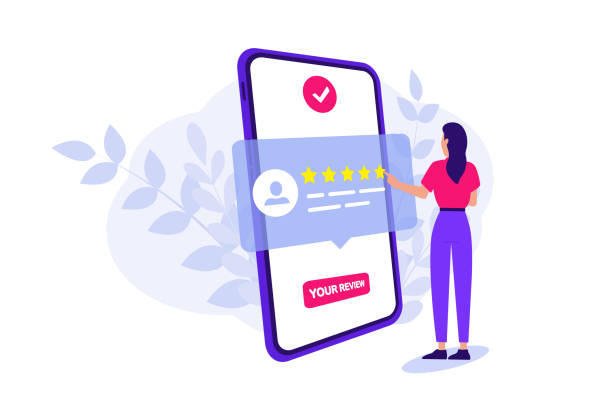
The successful launch of a custom website design is not the end, but the beginning of a new chapter that requires ongoing #maintenance and #support.
A custom site, like any complex software, needs continuous care and attention to maintain optimal performance, security, and up-to-dateness.
Neglecting this stage can lead to serious problems, including performance degradation, security vulnerabilities, incompatibility with new browsers, and even data loss.
Maintenance services include several key aspects, each vital for the long-term stability and success of your website.
The first and most important aspect is security updates.
Websites are constantly exposed to new cyber threats, and keeping the software, frameworks, and libraries used in your unique website development updated is essential to protect against vulnerabilities and cyberattacks (such as SQL injection, XSS, and DDoS attacks).
Additionally, monitoring site performance is of great importance.
This includes checking page loading speed, server response time, and monitoring site traffic to identify and resolve any potential issues that could disrupt the user experience.
Regular data and database backups are also highly important to prevent information loss in the event of unexpected incidents (such as server failure, malware attacks, or human error).
Furthermore, technical support includes fixing bugs and potential issues that may appear after launch, adding new functionalities as needed for site development and improvement, and responding to questions from users or site administrators.
Given the continuous changes in web technologies and search engine algorithms, your custom website design must also be constantly updated and optimized to maintain its performance and stay aligned with new trends.
Investing in maintenance and support services for your personalized website build ensures that your site remains active, secure, fast, and adaptable to your growing business needs, guaranteeing long-term return on investment.
This allows you to focus peacefully on your core business activities, while specialists take care of your online platform.
| Maintenance Task | Why is it Important? |
|---|---|
| Security Updates | Protection against cyberattacks, malware, and new security vulnerabilities. |
| Performance and Speed Monitoring | Ensuring high loading speed and continuous site accessibility, improving user experience and SEO. |
| Regular Data Backup | Preventing loss of vital business and customer data in case of disaster. |
| Bug and Technical Issue Fixing | Maintaining a smooth and error-free user experience, preventing dissatisfaction and customer loss. |
| Development and Feature Addition | Adapting to new business needs, market demands, and technology trends to maintain competitiveness. |
| Continuous SEO Optimization | Monitoring Google algorithm changes and optimizing content and structure to maintain and improve ranking. |
Cost of Custom Website Design and Factors Affecting It
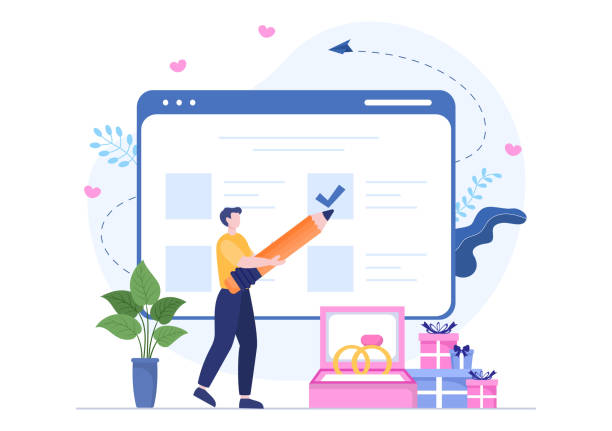
One of the key questions for any business considering custom website design is the issue of #cost.
Contrary to the common perception that #custom_website_design is very expensive, it should be said that this cost is a strategic investment determined by various factors and can yield significant returns in the long term.
The first and most important factor is the #complexity and #scale of the project; a site with simpler functionalities, fewer pages, and standard design will certainly cost less than a comprehensive platform with complex features such as multi-currency online payment systems, advanced user portals, inventory management tools, or integration with CRM software.
The more specific features and functionalities are required, the more time and resources will be needed for its development.
Another factor is the #experience and #reputation of the design team or agency; reputable and experienced agencies with a brilliant track record in large and successful projects usually have higher rates, but in return, they also offer better quality of work, expertise, and support, which can prevent additional costs arising from technical issues or inefficiency in the long run.
Geographical location of the development team can also affect the price; labor rates vary in different regions of the world.
Furthermore, specific features requested by the client (such as custom animations, specific user interfaces, or integration with third-party APIs), project timeline (does the project need to be completed in a short period, which might require more resources?), and type of technologies used (some languages and frameworks might have fewer specialists or more complexity in implementation) also play a role in determining the final cost.
Finally, it should be remembered that maintenance and support costs must also be considered after launch, which include security updates, bug fixes, performance monitoring, and future developments.
However, the return on investment from a high-quality custom website design, through increased internal efficiency, improved customer experience, higher conversion rates, and ultimately, increased sales and brand credibility, will usually be much greater than its initial cost.
Building a personalized website is a valuable and lasting asset for the future of your business that allows you to achieve superiority in the digital market and experience significant growth.
Did you know your company’s website is the first point of contact for 75% of potential customers?
Your website is the face of your brand. With **Rasaweb**’s corporate website design services, build an online presence that earns customer trust.
✅ Create a professional and lasting brand image for your business
✅ Attract target customers and increase online credibility
⚡ Get a free consultation from **Rasaweb** experts now!
Successful Examples of Custom Website Design
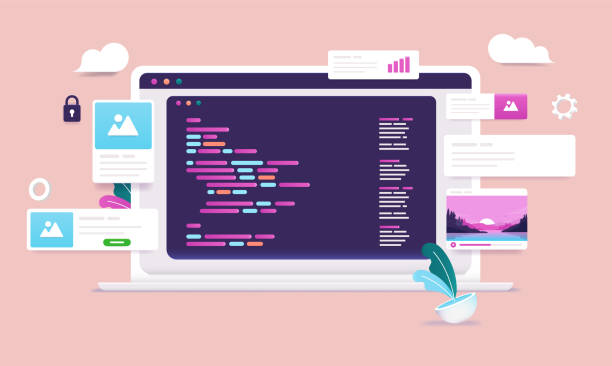
To better understand the value and profound impact of custom website design, a look at #successful_examples worldwide can be highly inspiring and demonstrate how leading companies have leveraged this approach to achieve their strategic goals.
Many large and innovative companies in various sectors have opted for unique website development solutions instead of using ready-made and generic templates, to best meet their specific needs and those of their customers, and to create a sustainable competitive advantage.
These examples include complex cloud platforms, specialized social networks, enterprise content management systems, and online marketplaces with unique functionalities.
For example, companies offering complex cloud services or educational platforms with advanced grading and tracking systems and multi-faceted interactions typically utilize custom designs.
A large news website with millions of daily visitors that requires a fully customized content management system for rapid and high-volume news publication, a powerful archive, and personalized features for users, or a large-scale e-commerce platform that needs personalized capabilities for each user, complex inventory management with tens of thousands of products, and integration with logistics and warehousing systems, are all examples where custom website design is the best and only practical option.
These sites are not only visually unique and fully reflect the brand identity, but also unparalleled in performance; they can handle high volumes of traffic, provide complex functionalities seamlessly, and integrate smoothly with internal business systems.
These successful examples clearly demonstrate how custom website development can help companies differentiate themselves in today’s competitive market and experience significant growth.
A custom site gives businesses the ability to not only meet their current needs but also be prepared for future innovations and expansions.
This means a digital platform that grows with your business and easily accommodates new functionalities.
This leads to your site being not just a marketing tool, but an important operational hub for your entire business, resulting in improved productivity, increased customer satisfaction, and ultimately, greater profitability.
The Future of Custom Website Design and Upcoming Trends

The world of #custom_website_design is constantly evolving, and anticipating #future_trends helps businesses prepare for what lies ahead and intelligently direct their investments.
One of the most important trends is the deeper integration of Artificial Intelligence (AI) and Machine Learning (ML) into websites.
These technologies enable unprecedented personalization of user experience, offering smart recommendations, advanced chatbots, automating customer support processes, and deeper data analysis to understand user behavior.
Future websites will increasingly be able to interact uniquely with each user and optimize content and services based on their preferences and history.
Headless CMS is also expanding and becoming a standard in unique website development.
This approach allows developers to manage content in a central platform and deliver it to any type of user interface (website, mobile application, smart gadgets, virtual and augmented reality), offering tremendous flexibility in providing multi-channel content and user experience.
Furthermore, #Web3 and #blockchain_technology are entering the web space and can revolutionize the concept of custom website design; these technologies enable decentralized, more secure, and transparent websites where users have greater control over their data and digital identity.
This can lead to the emergence of new business models and entirely different digital interactions.
Progressive Web Apps (PWAs), which combine the best features of web and mobile applications (such as offline functionality, easy installation on the home screen, and access to native device capabilities), will continue to maintain their popularity and, as a custom website design solution, provide a user experience close to a mobile application without the need for app store downloads.
Finally, the emphasis on #voice_optimization for voice searches, as well as the increasing importance of #web_sustainability and green design, are other significant trends in custom website design.
These trends indicate that the future of web design is moving towards highly personalized, intelligent, integrated, and responsible user experiences, and businesses must be prepared to keep pace with these changes.
Frequently Asked Questions
| Question | Answer |
|---|---|
| What is custom website design? | Custom website design refers to the process of building a website from scratch, designed and coded based on the specific needs, goals, and brand identity of a particular business, unlike using ready-made templates. |
| What is the difference between a custom website and a website with a ready-made template? | A custom website offers high flexibility, scalability, greater security, and the ability to precisely implement specific business features, whereas ready-made templates may have limitations in design and functionality. |
| What are the benefits of custom website design? | Benefits include unique design, better search engine optimization (SEO), higher security, better loading speed, customized user experience, and the possibility to add specific functionalities in the future. |
| How long does custom website design take? | The time required for custom website design depends on the project’s complexity, number of pages, required functionalities, and content volume, and can vary from a few weeks to several months. |
| How is the cost of custom website design calculated? | The cost is calculated based on the working hours of the design and development team, project complexity, specific requested features, UI/UX design, content volume, and post-design services (such as support and maintenance). |
And other services of Rasaweb Advertising Agency in the field of advertising
Smart SEO: A fast and efficient solution for campaign management focusing on precise audience targeting.
Smart Customer Journey Map: Professional optimization to increase click-through rates using Google Ads management.
Smart Marketing Automation: An innovative platform to improve customer acquisition with custom programming.
Smart Direct Marketing: A novel service to enhance SEO ranking through SEO-driven content strategy.
Smart Conversion Rate Optimization: A dedicated service for improving SEO ranking based on real data.
And over hundreds of other services in the field of internet advertising, advertising consultation, and organizational solutions.
Internet Advertising | Advertising Strategy | Advertorial
Sources
Custom Website Design Guide
Advantages of Custom Website Design
Steps to Design a Professional Website
Entering the Digital World with Website Design
? For your business to shine in the digital world and achieve your goals, Rasaweb Afarin Digital Marketing Agency is by your side, offering comprehensive services including responsive website design, SEO, and advertising campaign management.
📍 Tehran, Mirdamad Street, next to Bank Markazi, Kazeroun Jonoubi Alley, Ramin Alley No. 6

